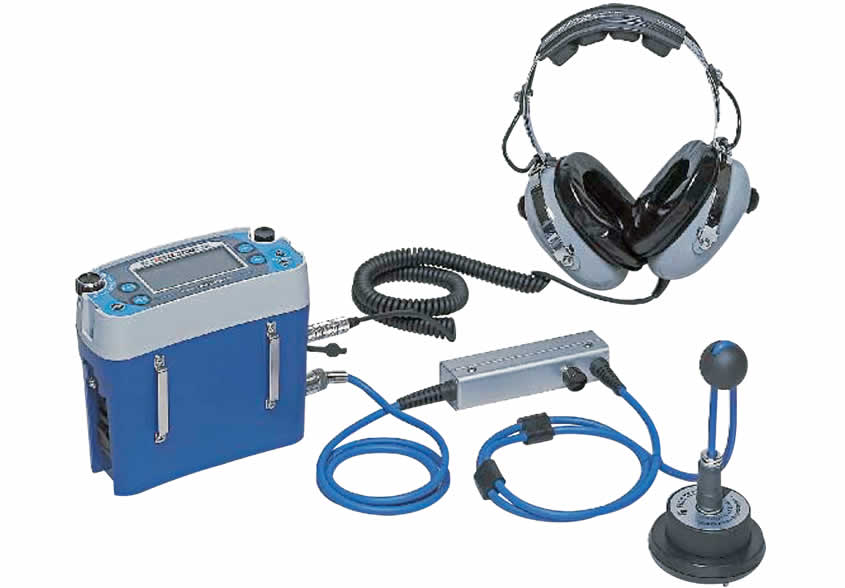Comprehensive Guide to Water Leak Detection for Property Owners and Organizations
Cutting-edge Solutions for Early Detection of Water Leakages in Structures and Facilities
From sophisticated leak discovery innovations to the deployment of IoT sensing units for real-time monitoring, the landscape of leak prevention is progressing quickly. Automated water flow analysis systems are reshaping how leaks are determined and attended to, leading the way for a positive method to water leak detection.
Advanced Leak Detection Technologies
Advanced leakage detection technologies, outfitted with sophisticated sensors and formulas, play a critical function in swiftly identifying and determining water leakages in various setups. Electromagnetic sensing units can identify adjustments in electromagnetic fields created by water, providing yet an additional layer of leak discovery capability.

IoT Sensors for Real-Time Surveillance
In the realm of contemporary water leakage detection, the combination of IoT sensing units for real-time surveillance represents a critical improvement in boosting proactive leak discovery capacities. These sensing units use constant tracking of water supply, giving real-time data on water flow prices, pressure variants, and temperature level modifications. By leveraging IoT technology, these sensors can find also the tiniest abnormalities in water use patterns, enabling early identification of potential leaks before they escalate into major issues.
IoT sensors transmit data to a centralized platform, where advanced algorithms analyze the information and generate alerts or alerts when abnormalities are discovered. This real-time surveillance capacity permits homeowner or facility supervisors to quickly resolve leaks, lessening water damage, decreasing repair work costs, and conserving water sources.
Additionally, IoT sensors can be integrated with structure administration systems, permitting automated responses to detected leakages, such as shutting down water valves or activating pumps to minimize the effect of leaks. Overall, the execution of IoT sensors for real-time monitoring dramatically boosts the effectiveness and effectiveness of water leakage detection in structures and facilities.
Artificial Intelligence Algorithms for Leak Prediction

One key benefit of utilizing artificial intelligence for leak forecast is its capacity to continuously find out and enhance its precision with time. As more data is accumulated go and fed right into the formula, it can fine-tune its predictions and adjust to changing problems, eventually increasing the integrity of leakage discovery systems.
Additionally, artificial intelligence formulas can help in determining subtle indicators of leaks that may go undetected by traditional tracking techniques. water leak detection. By evaluating intricate data embed in real-time, these algorithms can supply early cautions and alerts, enabling for prompt intervention and preventive upkeep to reduce possible water damage and connected prices
Using Thermal Imaging for Leakage Detection
Thermal imaging innovation offers an encouraging strategy for discovering water leakages in various systems and frameworks. By utilizing infrared radiation and temperature variations, thermal imaging cameras can identify concealed leakages that are not easily visible to the naked eye. When water runs away from pipes or structures, it commonly transforms the temperature level of the surrounding area, producing temperature level differentials that thermal cameras can capture. These temperature irregularities are after that converted into visible photos, highlighting the specific location of the leak.
One of the his response crucial benefits of thermal imaging for leak detection is its non-intrusive nature. Unlike conventional techniques that may call for burglarizing wall surfaces or floorings to find leaks, thermal imaging enables non-destructive testing. This not only saves time and reduces costs yet additionally lessens interruption to the building or facilities being evaluated. Additionally, thermal imaging can swiftly scan big areas, offering a detailed summary of potential leak resources in a timely manner. Overall, using thermal imaging innovation improves the efficiency and precision of water leakage detection, making it a beneficial device for preserving the integrity of structures and facilities.
Automated Water Flow Analysis Equipments
Exactly how can computerized water circulation analysis systems change the detection and monitoring of leaks in numerous systems and facilities? Automated water circulation analysis systems offer a positive method to leakage detection by continually keeping an eye on water flow rates and patterns. By developing baseline information, these systems can quickly determine deviations that might show a leak, making it possible for prompt treatment to avoid considerable damage.
These systems use advanced algorithms to assess real-time data and offer prompt alerts when anomalies are detected, permitting swift action to be taken. Furthermore, automatic water flow analysis systems can be incorporated with structure management systems or IoT platforms, boosting general performance and enabling remote monitoring abilities.
Furthermore, the data collected by these systems can be used for predictive maintenance functions, assisting to determine prospective powerlessness in the facilities before leaks occur. Overall, the implementation of automated water circulation evaluation systems can significantly improve leakage discovery and administration methods, inevitably bring about set you back financial savings, minimized water waste, and enhanced sustainability in buildings and infrastructure.

Conclusion
In final thought, the combination of innovative leakage discovery modern technologies, IoT you can look here sensors, artificial intelligence algorithms, thermal imaging, and automatic water flow evaluation systems uses cutting-edge remedies for very early discovery of water leakages in structures and framework. These modern technologies make it possible for real-time tracking, forecast of leaks, and efficient detection approaches to prevent water damage and wastefulness. Applying these options can assist in preserving the stability and sustainability of water systems in various setups.